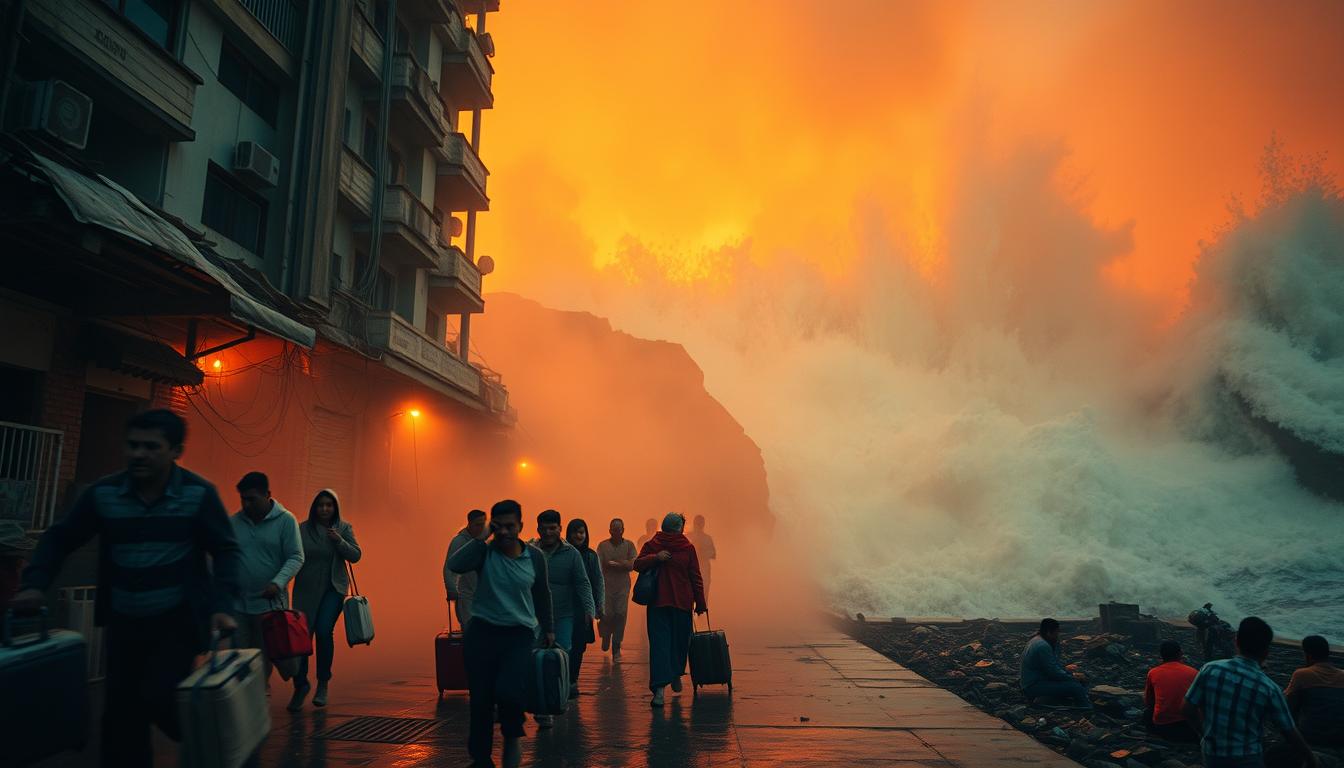Can one plan truly let you chase big thrills and still protect your wallet if things go wrong?
You’re planning real excitement — and you need a policy that welcomes those risks, not blocks them. Many standard plans exclude high‑risk sports, but an add‑on bundle can lift those limits so a broken ski or a diving injury isn’t an out‑of‑pocket surprise.
We show which benefits matter: medical limits, evacuation, gear loss, trip cancellation, and 24/7 global assistance. That way you can match a plan to altitude, routes, and group sizes without overpaying.
Along the way we explain when to buy a plan, how Cancel for Any Reason works, and how to get a quick quote to compare options. By the end, you’ll know which travel insurance plan fits your active style and how to book it with confidence.
Travel with Confidence: Comprehensive Adventure Coverage for Today’s Trips
Active trips demand protection that moves as fast as you do—so you can focus on the route, not what might go wrong.
Choose plans that pair strong medical and evacuation limits with practical support for cancellations, delays, and lost gear. Top marketplaces compare 20+ providers, show verified reviews, and highlight 24/7 phone help so you can find a plan that fits your pace.
Good policies expand standard protection to include the specific activities you booked. That means planned sports, guided climbs, or open-water dives can be listed so benefits apply when you need them.
Support services matter as much as dollar limits. Pre-trip benefit checks, document guidance, and travel assistance during an emergency simplify logistics and speed care across time zones.
- Medical & evacuation safety nets for on-route incidents.
- Gear protection and trip safeguards for delays or cancellations.
- 24/7 travel assistance to coordinate care and replacements.
| Benefit | Basic | Premium |
|---|---|---|
| Emergency medical | $50k | $500k |
| Evacuation | $100k | $1M |
| Gear & delay aid | $1k | $3k |
What Is Adventure Travel Insurance and Why It Matters for Active Travelers
When you book an active itinerary, a standard policy can leave big gaps if you get hurt on a climb or a dive.
Adventure travel insurance fills those gaps by adding specific protections for high‑risk activities. Many regular travel insurance plans exclude participation in climbing, diving, bungee jumping, and similar pursuits. That means medical bills or evacuation expenses may fall to you unless your plan includes an sports bundle or waiver.
How special add-ons fill the gaps in standard policies
Providers offer Adventure Sports Bundles that remove exclusions and restore benefits. These add‑ons put medical, baggage, and trip protections back in place for listed activities.
- Listed activities: Policies often name covered sports and set thresholds—altitude caps for mountaineering, certification rules for dives.
- Limits matter: Some operators split “adventure” and “extreme” categories; higher risk may need extra endorsements.
Real-world risks: mountain slips to scuba incidents
If you twist an ankle on a mountain route or crack a mask while diving, exclusions in a typical policy can leave you paying expenses and emergency transport yourself. The right plan protects the moment and the costs that follow.
Waiving exclusions so high-adrenaline activities are protected
Waivers or bundles explicitly list covered activities so your policy applies during guided climbs, licensed jumps, or certified dives. Read the covered activities list and match it to your trip to reduce surprises.
| Feature | Standard Policy | With Sports Bundle |
|---|---|---|
| Medical for listed activities | Often excluded | Included up to policy limit |
| Evacuation & emergency aid | Limited or denied | Covered when activity listed |
| Equipment & trip expenses | Variable | Reimbursed if tied to a covered incident |
travel insurance with adventure coverage: Activities We Cover and Typical Exclusions
Your itinerary can span water, land, air, and snow—make sure the policy matches each activity. Read the listed activities closely so you know what is included and what needs an add‑on.
Water adventures
Scuba diving, snorkeling, surfing, wakeboarding, kayaking—many plans cover these when you meet operator rules and certification limits. Diving often requires a depth cap or proof of certification.
Land pursuits
Hiking, mountain biking, rock climbing, trekking, camping—distance, trail grade, or climbing altitude can move an activity into an extreme tier. Guided trips are often safer to list.
Air thrills
Bungee jumping, skydiving, paragliding, hot air ballooning, zip lining usually need an add‑on. Tandem or licensed operator events are more likely to be covered than solo or competitive jumps.
Winter sports
Skiing, snowboarding, heli‑skiing, snowmobiling—resort runs often sit in base plans, while heli‑skiing and racing may require higher tiers or specific endorsements.
Know your limits
Policies set altitude, depth, and professional participation rules. If your mountain plan goes above certain meters or your dive exceeds depth limits, buy the correct sports bundle.
- Match each activity at your destination to the exact policy list.
- Filter for multi‑sport benefits if your vacation mixes water, air, and snow.
- Declare professional or competitive participation up front to avoid denials.
| Activity Group | Typical Inclusions | Common Exclusions/Triggers | What to Check |
|---|---|---|---|
| Water | Snorkel, surf, guided dives | Unlicensed dives, extreme depths | Depth caps, certification |
| Land | Day hikes, mountain biking, guided climbs | High‑altitude climbs, solo technical routes | Altitude limits, trail grade |
| Air & Winter | Tandem skydives, resort skiing, hot air balloons | Competitive events, heli‑drop zones | Operator license, guided status |
What Your Adventure Travel Insurance Can Cover
When plans go sideways on a remote ridge or reef, the right policy steps in fast.

Emergency medical expenses and evacuation to the nearest quality facility
Emergency medical expenses can pay for urgent care, hospital stays, and prescriptions after a covered incident. Evacuation benefits help move you to the nearest qualified facility when local care is inadequate.
Emergency search and rescue in remote areas
Search and rescue funding covers on‑the‑ground extractions and helicopter lifts in remote zones. That protection matters when local resources are limited and minutes count.
Trip cancellation, interruption, and “Cancel for Any Reason” options
Trip protections reimburse prepaid tours, lesson fees, or guide deposits when covered events force you to cancel. Some plans offer an optional “Cancel for Any Reason” add‑on for extra flexibility.
Sports equipment: loss, damage, delay, and rental reimbursement
Equipment benefits replace or repair lost or stolen gear. If your kit is delayed, rental reimbursement keeps you on schedule while you wait for replacements.
Travel inconvenience and baggage protection
Delay and baggage protections help cover essentials when bags are late or reroutes force new purchases. These benefits reduce stress so you can focus on the activity ahead.
24/7 travel assistance before and during your trip
Travel assistance gives you one number to call for medical referrals, claims starts, and logistics. Leading marketplaces include round‑the‑clock support so you aren’t solving problems alone.
- Read limits for medical, evacuation, and equipment so your plan matches remote or high‑altitude activities.
- Buy early to lock in time‑sensitive benefits and list all planned activities.
| Benefit | Typical Limit | Why it matters |
|---|---|---|
| Emergency medical | $50k–$500k | Handles hospital bills abroad |
| Evacuation | $100k–$1M | Moves you to proper care quickly |
| Equipment & rentals | $500–$3k | Replaces lost or delayed gear |
How Much Does Adventure Coverage Cost in the United States
Knowing a realistic daily premium helps you balance price against the limits you need. A clear number makes planning simpler when your trip includes higher‑risk activities.
Average prices: Expect roughly $27–$29 per day. For a 15‑day active itinerary, that works out to about $408 in the U.S. market.
What drives your price
Your final quote reflects several risk factors. Age and pre‑existing health status can push rates up. The destination and how remote it is affect evacuation needs and costs.
Trip length and the number of activities change the premium. Higher medical and evacuation limits increase price but offer stronger protection on remote routes.
- Prepaid expenses: Guided treks and gear rentals raise trip protection needs and cost.
- Activity mix: High‑risk sports and higher tiers or CFAR add to the premium.
- Compare: Small differences in benefits and limits often change price‑to‑value.
| Item | Typical Cost | When it rises |
|---|---|---|
| Daily average | $27–$29/day | Older age, extreme activities |
| 15‑day trip | ~$408 | Higher limits, CFAR, prepaid trip value |
| Evacuation‑heavy plan | Varies widely | Remote destination, limited local care |
Pick an insurance plan that fits your exact itinerary and the activities you’ll do. The goal is not the cheapest option, but the right balance of cost and benefits for your trip.
Choosing the Right Plan and Options for Your Activities
Start by deciding which activities you’ll do and then pick the plan that covers them clearly.
Plan tiers and add‑ons: Adventure Sports bundles and CFAR
Many providers offer tiered plans—Preferred and Deluxe—plus an Adventure Sports bundle and CFAR as add‑ons. Start with the tier that meets your medical and evacuation needs.
Match your itinerary: water, winter, air, and land filters
Use activity filters to confirm listed activity limits. Check depth caps for dives, altitude rules for climbs, and whether guided days differ from unguided ones.
Provider differences: medical and evacuation limits, equipment benefits
Compare medical and evacuation caps closely. Remote routes often need higher caps and stronger rescue benefits.
Verify equipment loss, damage, delay, and rental reimbursement limits for skis, bikes, or dive gear.
Round‑the‑clock help: 24/7 emergency assistance numbers you can trust
All major marketplaces list plans that include 24/7 assistance. Keep emergency numbers and your policy ID in your phone and daypack.
- Start with the right tier, then add bundles and CFAR only if needed.
- Match every activity on your calendar to the policy list.
- Balance price against the benefits you’ll likely use.
| Feature | Standard | Preferred/Deluxe |
|---|---|---|
| Medical limit | $50k | $250k–$500k |
| Evacuation | $100k | $500k–$1M |
| Equipment & rentals | $500–$1k | $2k–$3k |
From Quote to Claim: Get Covered Before You Go
Locking in the right plan begins the moment your itinerary is set—small details change big outcomes. Start by getting one clear quote that lists dates, guides, and each activity. That surfaces plans built for adventure sports and reduces hidden gaps.
Start your quote: compare plans built for adventure sports
Use exact trip details so search tools return policies that match your list of activities. A focused quote shows which plans include rental reimbursement and emergency aid.
Buy early for maximum benefits and fewer exclusions
Purchase soon after booking to unlock time‑sensitive benefits. Early buy clarifies exclusions and lets you add a CFAR or sports bundle if needed.
When the unexpected strikes: how claims work (flash‑flood loss example)
Document everything—photos, receipts, operator notes. In one cave‑hike flash flood, a claim paid USD $1,984.68 for lost photography and camping equipment.
- File promptly and call 24/7 emergency assistance first.
- Keep your travel insurance policy number offline and handy.
- For evacuations, the assistance service coordinates care and movement.
| Step | What to do | Why it matters |
|---|---|---|
| Quote | Enter exact dates & activities | Surfaces proper plans |
| Buy | Secure early; add bundles | Locks benefits, reduces exclusions |
| Claim | Document, call assistance, submit items | Speeds reimbursement |
Conclusion
The right plan turns uncertain moments into solvable problems so you can keep exploring.
Pick travel insurance that matches your activities and destination. Confirm listed activities—hiking, diving, climbing, kayaking, or a quick bungee jump—so benefits apply when you need them.
Prioritize strong evacuation and emergency medical expenses limits if you’ll be far from home or in remote mountain or air zones. Buy early, save policy IDs offline, and note 24/7 assistance numbers.
Costs stay fair when you tailor benefits to the trip. Choose your plan, lock in the options you need, and set out confident that your policy backs every mile and moment.


